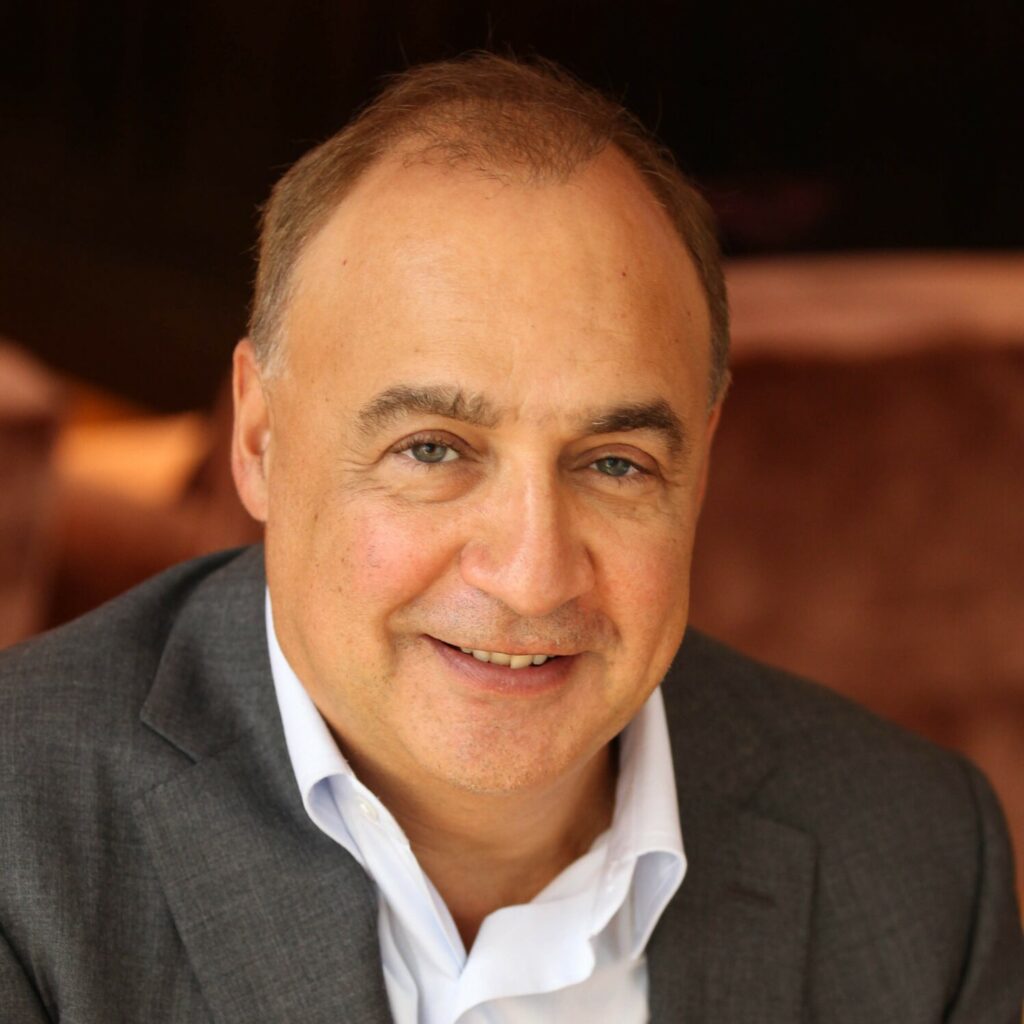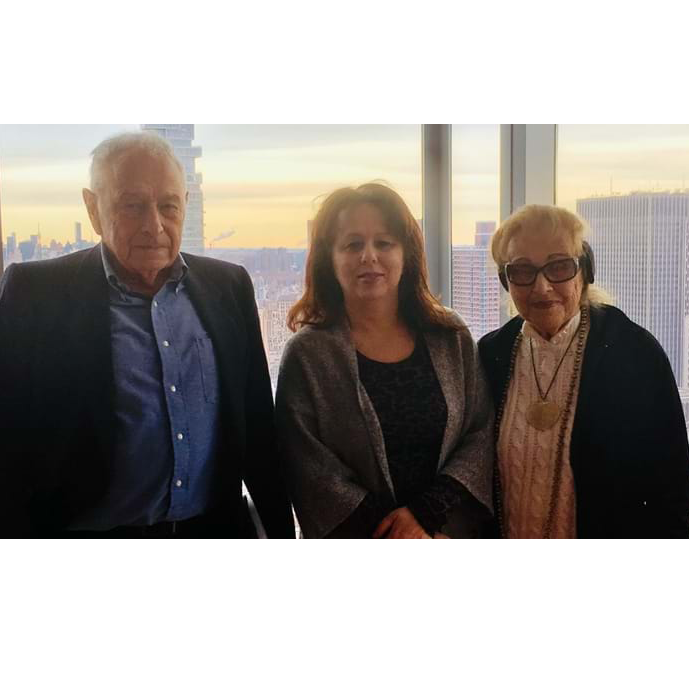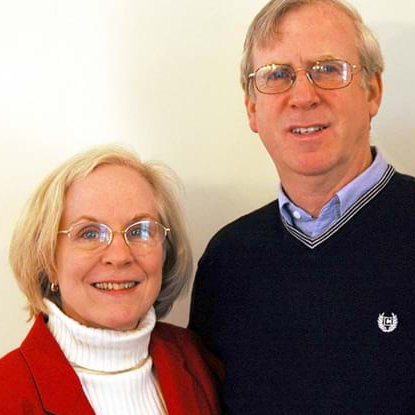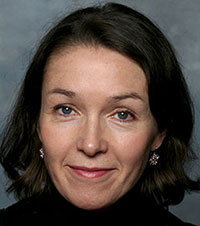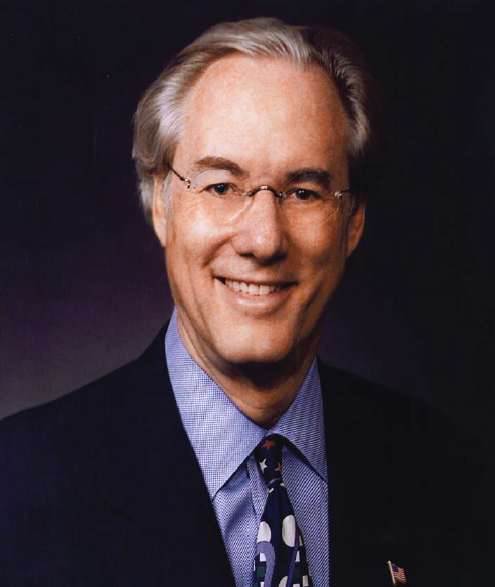
What started as novel research 100 years ago is a major source of energy today, in part because of a research prize established by an Academy member.
Published July 30, 2024
By Nick Fetty
Digital Content Manager
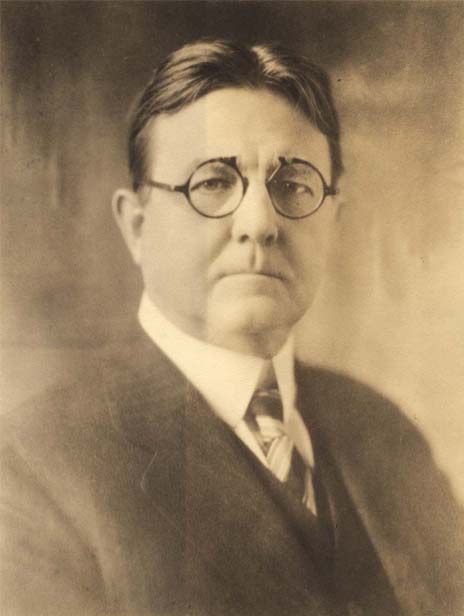
While electric vehicles and solar panels are commonplace around New York these days, the city’s history with solar energy goes back at least a century.
The New York Academy of Sciences has been an incubator for solar energy research and promotion since the early part of the 20th century. This is when Academy member Abraham Cressy Morrison established “a prize of $100 (the equivalent of about $1,800 today) for the best paper on the question of whether released intra-atomic energy constitutes an important source of solar and stellar energy,” according to reporting from The New York Times.
Morrison, who served as the Academy’s President from 1938 to 1939, funded various awards and prizes promoting scientific research in the first half of the 20th century.
The Early Days of Solar Energy
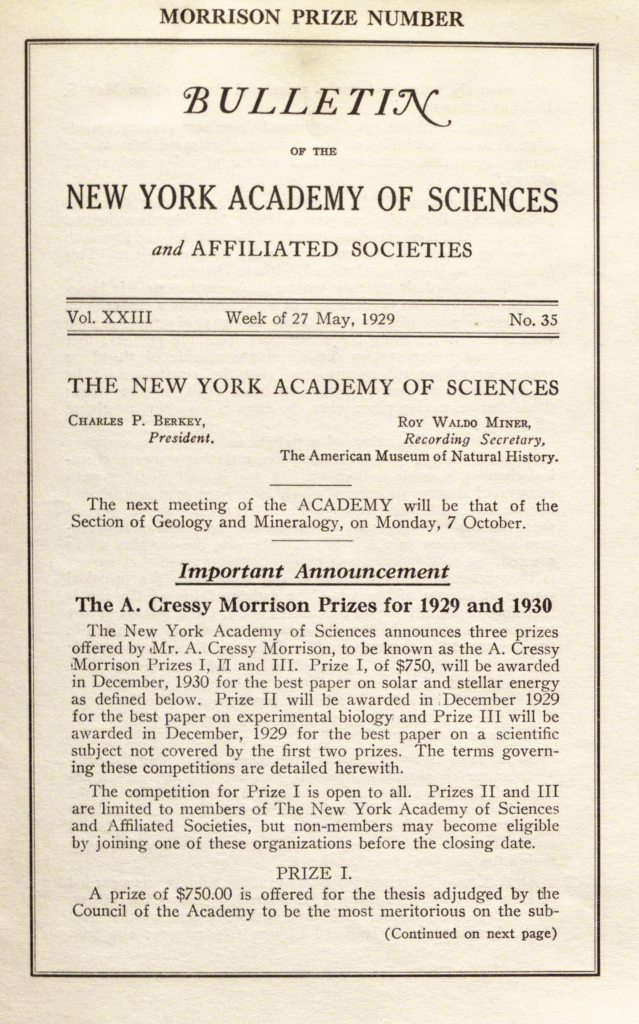
While solar energy research was novel at the time the award was established, within five years researchers were making advancements that helped to prove the potential of this new energy source. “This is merely an indication of the speed with which scientific research makes progress today,” The Brooklyn Daily Eagle reported in 1929.
According to that same article, Morrison pushed back at the idea that his motives were commercial, and instead emphasized his desire to advance science for sciences’ sake.
“It is of much more interest to me to know how the sun creates and continues its energy,” Morrison was quoted. “There is a gap in our knowledge of the sun and throughout the heavens there is a question mark that challenges us.”
Morrison was not the only scientist from this era to see solar as a potential energy source. The sentiment was shared by Thomas Edison, who happened to be a Fellow of the Academy. Around this time, the title of “Fellow” was bestowed upon active resident members credited with significant scientific achievements.
In a 1929 interview with Forbes magazine, Edison was asked “Do you believe that the age of electrical invention and discovery is over?” The 86-year-old Edison responded simply, “No; just started.”
Later in the interview he was asked “Do you believe the time will come when the world petroleum supply will be exhausted and man will turn to electric vehicles?” But oddly enough, he didn’t quite yet see the potential in EVs, answering “If petroleum was exhausted, we can get power for automobiles from powered coal, benzol, alcohol.”
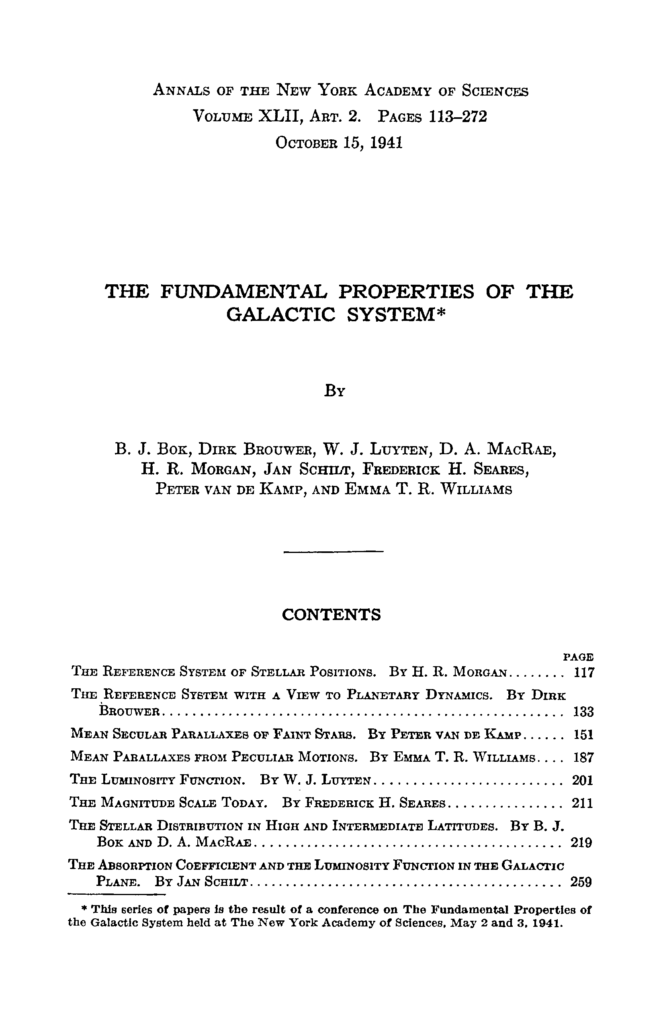
Research Published in Annals and Transactions
The research that resulted from Morrison’s prizes would go on to be published in Annals of the New York Academy of Sciences, the Academy’s academic journal that dates back to 1823.
Volume XLII, Article 2 of Annals, published in 1941, focused on “The Fundamental Properties of the Galactic System.” Academic papers published in this issue examined topics like “The Luminosity Function” and “The Stellar Distribution of High and Intermediate Latitudes.”
The issue also acknowledged Morrison directly, stating “This publication is due to the generosity of Mr. A. Cressy Morrison, who, through the establishment of the A. Cressy Morrison series of prizes in astronomy, has stimulated many noteworthy investigations on the sources of stellar energy.”
The Academy also devoted entire conferences to this line of research during this era. An astronomical conference in 1939, entitled “The Internal Constitution of the Stars,” brought in presenters from as far away as Finland and Czechoslovakia. The conference was so well-received that “[i]t was unanimously decided to follow up this meeting with a second conference to be held next fall,” according to Transactions of the New York Academy of Sciences.
Academy Awards Support Solar Energy (2018-2021)
Solar energy continues to be part of the Academy’s programming today from Awards to Education. Several recent recipients of the Blavatnik Awards for Young Scientists, sponsored by the Blavatnik Family Foundation and administered by the Academy, have made significant scientific research contributions to the field.
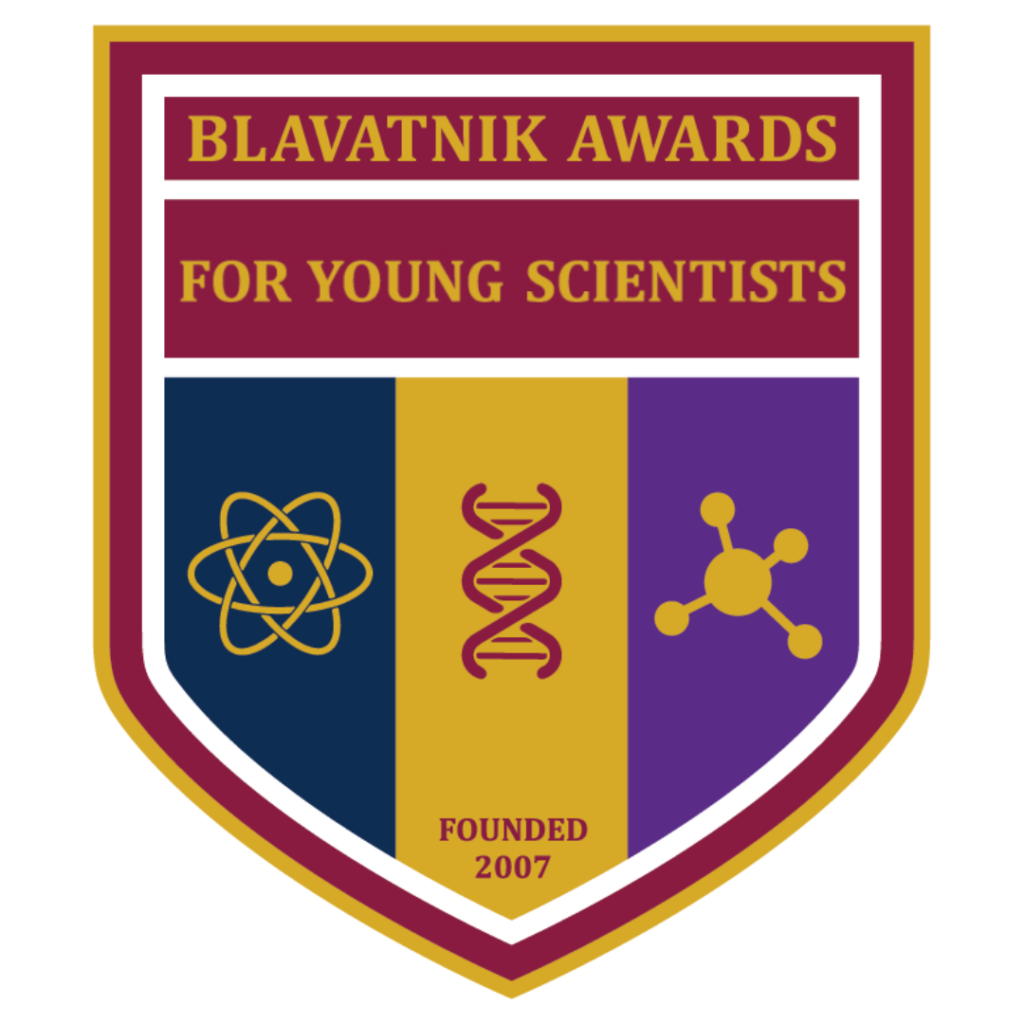
Henry Snaith, the 2018 Blavatnik Awards in the United Kingdom Physical Sciences & Engineering Laureate and who serves as the Binks Professor of Renewable Energy at the University of Oxford, found that metal halide perovskite materials can be employed in highly efficient solar cells. Snaith’s research aims to significantly reduce costs for “photovoltaic solar power [which] could help propel society to a sustainable future.”
Xiaoming Zhao, the 2021 Blavatnik Regional Awards Finalist in Chemistry and now on the faculty at Nanjing University of Aeronautics and Astronautics, has conducted extensive research on “perovskites,” which are less expensive and easier to produce than silicon-based solar cells. His research found “record-breaking efficiency and high stability after long-term use.”
Daniel Straus, the 2021 Blavatnik Regional Awards Winner in Chemistry and an assistant professor of chemistry at Tulane University, has advanced solar cells in two ways as a materials chemist. First, he “identified a structural instability in a promising new solar cell material, known as cesium lead iodide,” then he “also demonstrated a new technique to make chiral, or asymmetric, materials from very simple non-chiral molecules.”
Academy Awards Support Solar Energy (2022-2024)
Menny Shalom, the 2022 Blavatnik Awards in Israel Laureate in Chemistry and a professor of chemistry at Ben-Gurion University of the Negev, is developing stable, low-cost materials that “can be utilized for applications in photocatalytic and photo-electrochemical reactions and the development of solar cells, batteries, and fuel cells.”
Svitlana Mayboroda, the 2023 Blavatnik National Awards Physical Sciences & Engineering Laureate and McKnight Presidential Professor of Mathematics at the University of Minnesota, conducts research that provides “physicists with a new fundamental understanding of matter yielding improvements in crucial 21st century technologies, including LED lighting, semiconductors, and solar cells.”
Jooho Lee, the 2023 Blavatnik Regional Awards Laureate in Chemistry and an assistant professor of chemistry and chemical biology at Harvard University, studies “emergent functional materials, including solar cells, electrocatalysts for the hydrogen economy, and optoelectronics” at the microscale.
Samuel D. Stranks, the 2024 Blavatnik Awards in the United Kingdom Chemical Sciences Finalist and a professor of optoelectronics at the University of Cambridge, conducts research to make perovskite solar cells more commercially viable. His “work particularly sheds light on where efficiency losses are in perovskite materials and how they degrade over time, providing critical guidance to engineer long-lasting and high-performing commercial solar cells.”
Academy Educational Initiatives Advance Solar Energy

Renewable energy, specifically solar, was a component in the Junior Academy’s spring 2022 innovation challenge, sponsored by Ericsson. The winning team suggested utilizing solar panels as an energy source for their smart home concept.
Junior Academy member Sthuthi S. wanted to develop a solar panel that wouldn’t negatively impact wild birds. She and her team suggested using “infrared sensors and speakers [that produce] beeping noises at 3 kHz [to] deter birds from landing on solar panels.”
Fellow Junior Academy member Sharon L. expressed her optimism about future advancements in solar energy. “Finally, the development of new renewable energy sources — from paint-on solar cells to microgrids — are soon going to provide a democratization of energy to all corners of the world,” she said in 2017 for an article examining the next 100 years of scientific achievement. “It’s incredibly exciting to be living in a generation where we’ll have the opportunity to contribute to such innovative research!”
According to data from the Solar Energy Industries Association, cumulative U.S. solar installations went from less than 20,000 installed solar capacity (MWdc) in 2010, to nearly 200,000 MWdc in 2024. Similarly, data from the International Energy Agency shows that battery electric vehicles and plug-in hybrid vehicles in the U.S. rose from roughly 200,000 in 2013 to 4.8 million in 2023.
The Academy is at the forefront of new budding solar energy technologies that will help power the future. So, next time you see an EV driving down Broadway, or an array of solar panels on a rooftop, remember that technology has been a work in progress for at least a century. And the Academy has played its role in leading the “charge.”
